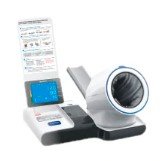The Importance of Efficient Phlebotomy Techniques in Healthcare
Summary
- Improved phlebotomy techniques lead to quicker and more accurate blood sample collection
- Efficient phlebotomy services can help reduce Healthcare Costs for patients
- Proper training and ongoing education for phlebotomists are crucial for maintaining high-quality services
Introduction
Phlebotomy is a critical aspect of medical lab work, involving the collection of blood samples for diagnostic testing and other medical purposes. Efficient phlebotomy techniques are essential for providing timely and accurate results, which can ultimately contribute to more efficient and affordable healthcare services in the United States. This article will explore the importance of phlebotomy techniques in the healthcare system and how improvements in this area can benefit both patients and Healthcare Providers.
The Role of Phlebotomy in the Healthcare System
Phlebotomy plays a crucial role in the healthcare system by providing Healthcare Providers with the necessary blood samples for diagnostic testing. These samples are used to evaluate patients' health status, diagnose diseases, monitor treatment progress, and assess the effectiveness of medications. Without accurate and timely blood sample collection, Healthcare Providers would not be able to make informed decisions about patient care.
Challenges in Phlebotomy
Despite its importance, phlebotomy can present challenges for both patients and Healthcare Providers. Some common challenges in phlebotomy include:
- Patient anxiety and discomfort during blood sample collection
- Difficulty in accessing veins, especially in patients with certain medical conditions
- Potential for sample contamination or hemolysis if proper techniques are not followed
Benefits of Improved Phlebotomy Techniques
Improvements in phlebotomy techniques can have a significant impact on the healthcare system in the United States. Some benefits of enhanced phlebotomy practices include:
- Quicker and more accurate blood sample collection, leading to faster diagnosis and treatment for patients
- Reduced risk of sample contamination or hemolysis, which can affect the accuracy of Test Results
- Enhanced patient experience through less pain and discomfort during blood sample collection
Efficiency and Affordability in Healthcare
Efficient phlebotomy services can contribute to more streamlined healthcare processes, thereby leading to cost savings for both patients and Healthcare Providers. Some ways in which improved phlebotomy techniques can enhance efficiency and affordability in healthcare include:
- Reduced wait times for patients to receive Test Results, allowing for quicker diagnosis and treatment
- Minimized need for repeat blood draws due to sample contamination or hemolysis, which can save time and resources
- Lower Healthcare Costs overall, as timely and accurate diagnostic testing can prevent unnecessary treatments or hospitalizations
Training and Education for Phlebotomists
Proper training and ongoing education for phlebotomists are essential for maintaining high-quality phlebotomy services in the healthcare system. Phlebotomists must be knowledgeable about the latest techniques and best practices in blood sample collection to ensure accurate and efficient services. Continuous education and training can help phlebotomists stay up-to-date on industry standards and advancements in phlebotomy technology.
Continuing Education Requirements
Many states have Continuing Education requirements for phlebotomists to maintain their certification. These requirements often include courses on phlebotomy techniques, infection control, safety protocols, and ethical practices. By staying current with their education, phlebotomists can provide high-quality services and contribute to the efficient delivery of healthcare in the United States.
Conclusion
Improvements in phlebotomy techniques are essential for providing more efficient and affordable healthcare services in the United States. By enhancing blood sample collection practices, Healthcare Providers can ensure timely and accurate diagnostic testing, leading to better patient outcomes and cost savings. Proper training and ongoing education for phlebotomists are critical for maintaining high-quality phlebotomy services and supporting the overall effectiveness of the healthcare system.

Disclaimer: The content provided on this blog is for informational purposes only, reflecting the personal opinions and insights of the author(s) on the topics. The information provided should not be used for diagnosing or treating a health problem or disease, and those seeking personal medical advice should consult with a licensed physician. Always seek the advice of your doctor or other qualified health provider regarding a medical condition. Never disregard professional medical advice or delay in seeking it because of something you have read on this website. If you think you may have a medical emergency, call 911 or go to the nearest emergency room immediately. No physician-patient relationship is created by this web site or its use. No contributors to this web site make any representations, express or implied, with respect to the information provided herein or to its use. While we strive to share accurate and up-to-date information, we cannot guarantee the completeness, reliability, or accuracy of the content. The blog may also include links to external websites and resources for the convenience of our readers. Please note that linking to other sites does not imply endorsement of their content, practices, or services by us. Readers should use their discretion and judgment while exploring any external links and resources mentioned on this blog.
